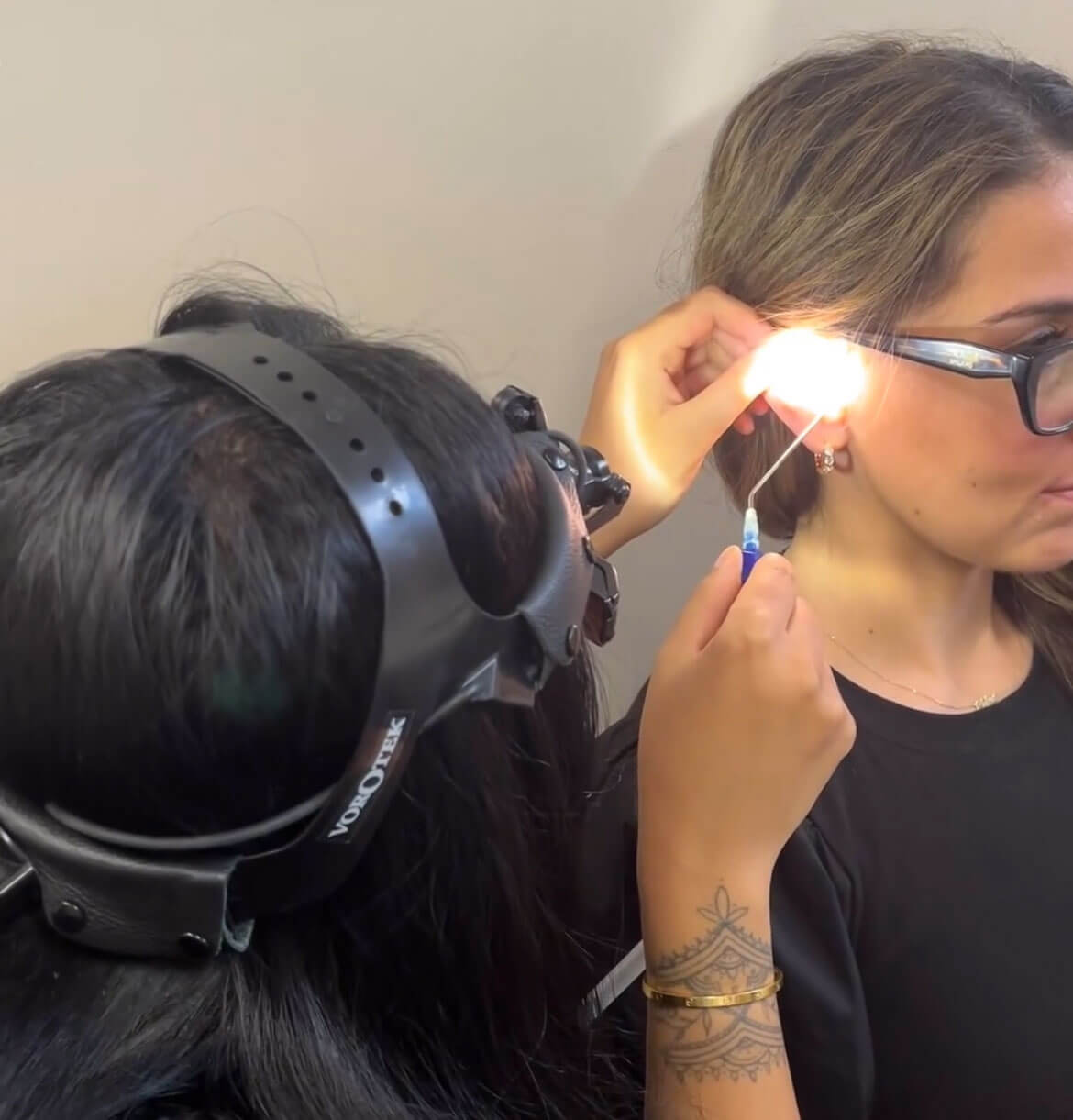Ear Wax & Wax Removal

Ear wax is a natural substance produced by the glands in the ear canal. While it serves a protective role in keeping the ears moisturised and preventing dust and debris from entering, an excess of ear wax can lead to various issues, including hearing loss, tinnitus, and discomfort. At Soundfair Hearing Centre, we are about more than just devices, and wax management can play an important part in hearing well. In this post, we will delve into the reasons behind ear wax accumulation, the impact it can have on hearing aids, and the effective removal methods available, such as microsuction and curette.
Why Do We Get Ear Wax?
Ear wax is a crucial component of our ear’s self-cleaning mechanism. The wax is a combination of dead skin cells, hair, and secretions from the ceruminous glands. Ear wax protects the ear by preventing germs, bacteria, and debris from entering and damaging the ear. It also provides lubrication and moisture, and therefore prevents the delicate skin of the ear from becoming dry and prone to irritation.
The wax gradually moves from the ear canal towards the opening, where it dries up and falls out naturally. In most cases, the process is self-regulating and doesn’t cause any issues. However, some individuals produce more ear wax than others, or their ear canals may be shaped in a way that hinders the natural extraction of wax. Factors such as age, genetics, and certain health conditions can also contribute to excessive ear wax production. Wearing hearing aids can also contribute to a build-up of wax as the presence of the hearing aid can impede the ear’s natural extraction process.
The Potential Issues of Excessive Ear Wax:
While ear wax is essential for ear health, problems can arise when there is an overproduction of wax. Issues that are associated with a build-up of ear wax include:
Hearing Loss: If ear wax accumulates and blocks the ear canal, it can inhibit the sound waves from reaching the eardrum. This blockage can lead to temporary hearing loss, causing sounds to become muffled or distorted.
Tinnitus: Excessive ear wax can also contribute to the development of tinnitus, a condition characterised by a ringing, buzzing, or hissing sound in the ears.
Discomfort and Dizziness: A build-up of ear wax can cause discomfort, a feeling of fullness in the ear, and in some cases, dizziness, or vertigo.
Effects of Ear Wax on Hearing Aids
For those using hearing aids, the effects of excessive ear wax are more pronounced. The small components of hearing aids, such as microphones and receivers, can easily become clogged or obstructed by an accumulation of wax. This can result in distorted sound quality, reduced effectiveness, or, in some cases, complete malfunction of the hearing aid. The ear wax can also completely or partially block the ear, which can cause a further hearing loss and cause the hearing aids to whistle/feed-back and impair the aid’s ability to amplify sound. This consequently affects the hearing aid wearer’s ability to hear and communicate.
Methods for Managing Ear Wax
Microsuction: A Gentle and Effective Solution
Microsuction is a modern and minimally invasive method of ear wax removal that has gained popularity for its safety and efficiency. Unlike traditional syringing methods, microsuction utilises a gentle suction device to remove ear wax without the use of water. This technique allows for precise control, reducing the risk of injury to the delicate structures of the ear.
Curette: A Manual Approach to Ear Wax Removal
Another commonly used method for ear wax removal is the curette which is a specialised tool designed to scoop out ear wax manually. This technique is often used when the wax is closer to the ear canal’s surface and can be safely removed without the use of water or suction.
The Importance of Professional Ear Wax Removal
While there are over-the-counter ear drops and home remedies available for managing ear wax, it is recommended to seek professional assistance for safe and effective removal, especially for individuals using hearing aids. Audiologists are trained to assess the specific needs of each individual and choose the most appropriate method for ear wax removal.
Understanding the role of ear wax in our ears and its potential impact on hearing and hearing aids is essential for maintaining optimal hearing health. If you’re experiencing hearing issues or discomfort due to ear wax, don’t hesitate to consult with a qualified hearing health professional. With techniques such as microsuction and curette, ear wax removal can be a quick and comfortable process, ensuring that you can enjoy the benefits of your hearing aids when listening and communicating.Soundfair Hearing Centre is committed to helping people hear their best by offering more than just devices. Therefore, we offer safe and effective wax removal services with our clinicians specialising in both microsuction and curette techniques.
For more information, or to book an appointment, call us on (03) 9510 1577 or email us at info@soundfair.org.au
